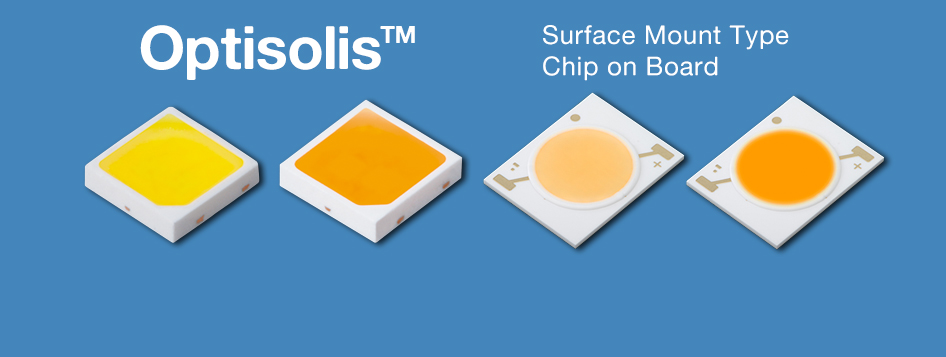LED (Light Emitting Diodes) is the newest and most exciting technological advance in the lighting industry, which appeared relatively recently and gained popularity in our market because of its advantages – high quality illumination, long life and endurance – Light sources based on semiconductor technology P and N has up to 20 times longer service life than fluorescent or incandescent lamps. This allows us to easily list the numerous advantages of LED lighting.
Light-emitting diodes are an essential element used in electronics for many years, but only recently they gained its popularity due to high power LEDs, giving light strong enough to be used as substitutes for mercury fluorescent lamps, incandescent lamps or so called energy saving fluorescent bulbs.
At this moment, there are LED sources and modules available on the market, which are strong enough to be used as infrastructure lighting such as street or park lighting, and even architecture lighting of office buildings, stadiums and bridges. They also prove to be useful as a primary source of light in production plants, warehouses and office spaces.
In LED systems being substitutes of common lighting, the most commonly used lamps are LED SMD and COB also called Chip LEDs with outputs ranging from 0.5W to 5W for household lighting and from 10W – 50W for industrial use. Therefore, has LED lighting its advantages? Yes, but also it has its limitations. What are they?
Advantages of LED lighting
Long service life – it is one of the greatest benefits of LED lights. LEDs used in this type of lighting have a high work efficiency and thus may run for up to 11 years compared to energy saving lamps with service life less than a year. For example, LEDs operating 8 hours per day will last for about 20 years of service life, and only after this period, we will be forced to replace the light source for new one. In addition, frequent switching on and off has no negative impact on the service life, while it has such impact in case of an older type o lighting.
Efficiency – LEDs are currently the most energy-efficient source of much less energy consumption (electricity) than incandescent, fluorescent, meta halide or mercury lamps, within the luminous efficiency of 80-90% for traditional lighting. This means that 80% of the energy supplied to the device is converted to light, while 20% is lost and converted into heat. The efficiency of the incandescent lamp is at 5-10% level – only that quantity of supplied energy is converted to light.
Resistance to impact and temperature – in contrast to traditional lighting, LED lighting advantage is that it does not contain any filaments or glass elements, which are very sensitive to blows and bumps. Usually, in the construction of high quality LED lighting, high-quality plastics and aluminum parts are used, which causes that LEDs are more durable and resistant to low temperatures and vibrations.
Heat transfer – LEDs, compared to traditional lighting, generate small amounts of heat due to their high performance. This energy production is mostly processed and converted into light (90%), which allows direct human contact with the source of LED lighting without the exposure to burn even after a long time of its work and in addition is limited to the exposure to fire, which may occur in rooms in which
lighting of the old type is used, that heats up to several hundred degrees. For this reason, LED illumination is more favorable for the goods or equipment that are extremely sensitive to temperature.
Ecology – the advantage of the LED lighting is also the fact that LEDs do not contain toxic materials such as mercury and other metals dangerous for the environment, in contrast to the energy-saving lamps and are 100% recyclable, what helps to reduce carbon dioxide emissions. They contain chemical compounds responsible for the color of its light (phosphor), which are not harmful to the environment.
Color – In LED technology, we are able to obtain each illumination light color. Basic colors are white, red, green and blue, but with today’s technology, progress is so advanced that we can get any color. Every individual LED RGB system has three sections, each of which gives a different color from the RGB palette color – red, green, blue.
Disadvantages
Price – LED lighting is more expensive investment than a traditional light sources. However, it is important to keep in mind that here the lifespan is much longer (over 10 years) than for regular light bulbs and at the same time it consumes several times less energy than the old type of lighting. During operation of one LED light source of a good quality, we would be forced to purchase min. 5-10 bulbs of the old type, which would not necessarily result in savings of our wallet.
Temperature sensitivity – Quality of diodes’ lighting is highly dependent on the ambient operating temperature. At high temperatures there are changes in the parameters of the current passing through the semiconductor elements, which can lead to burning out of the LED module. This issue affects only the places and surfaces exposed to very rapid increases of temperature or very high temperature (steel mills).
Post time: Jan-27-2021





